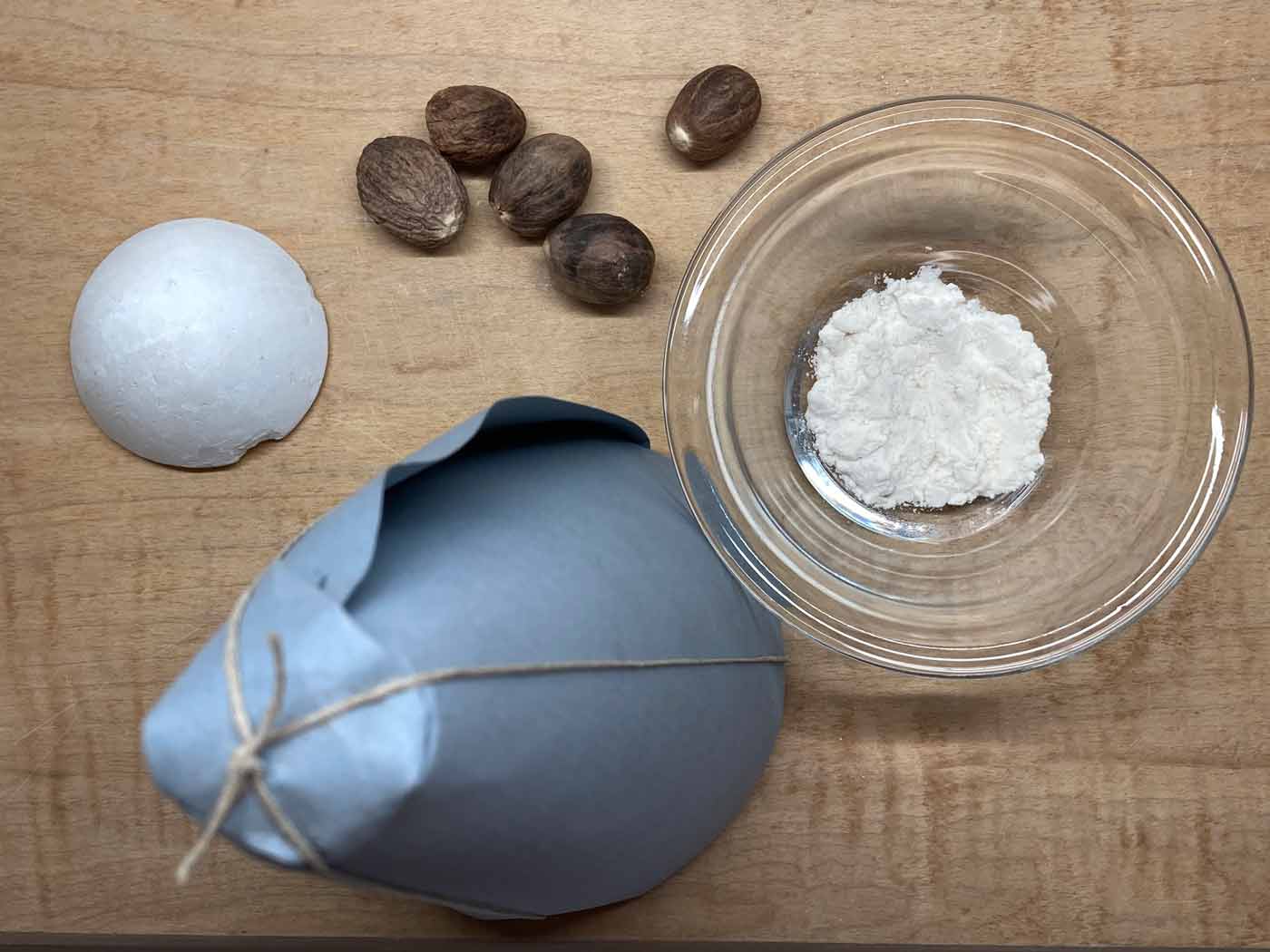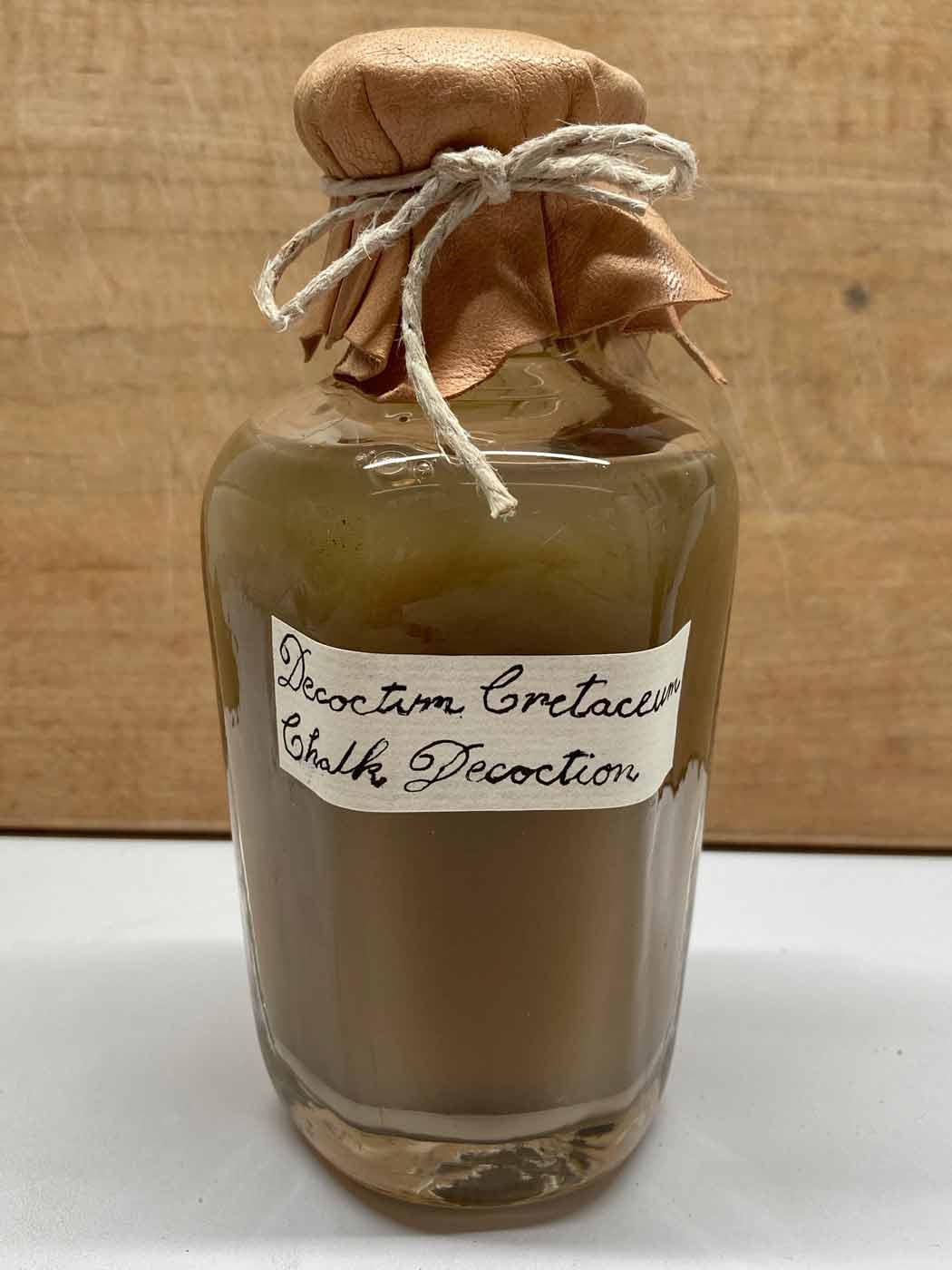Eighteenth-century apothecary apprentices compounded many different forms of medicine during their training. As a present-day apothecary assistant learning the trade, I do the same using 18th-century formulas and techniques. Today I am making a “decoction,” a form of medicine in which matter is boiled in water.

For some raw materials, boiling best extracts their virtues. A plant’s “virtue” is its nature as perceived by the senses. One plant may taste sweet, while another tastes bitter. A certain plant may have a pleasing aroma, whereas another one has a foul odor. Some matter is cooling while other matter is warming. To the 18th-century apothecary these are examples of plants’ virtues. Virtues in turn determine the effect or effects a specific medicine has on the body.
Chalk decoction is an antacid medicine which contains chalk, gum arabic, nutmeg, sugar, and water. Chalk, chemically calcium carbonate, is the active ingredient in this decoction. In the 18th century it was considered an absorbent earth. In 1762 physician John Ball wrote in The Modern Practice of Physic
The cure of the common Heart-burn, arising from acid juices in the stomach, is best effected by the testacea, and other absorbents; such as … creta … which frequently gives immediate relief, by absorbing and neutralizing the acid juices that occasion this disorder
“Creta” is the Latin word for white chalk.

POP QUIZ! Chalk’s virtue is:
A. Pleasant smell
B. Sticky texture
C. Red color
D. Absorbent
Everybody passes, even those who did not select “D”. Pay me back by liking this blog.
Calcium carbonate from chalk is still used as an antacid today, in Tums for example. Gum arabic is Acacia tree sap brought to England from Turkey. In this recipe, its purpose is to keep the chalk from settling on the bottom of the container in which the decoction is stored. Nutmeg and sugar originate in the East Indies; sugar was also grown on American plantations.

To make the decoction, water is boiled. Chalk and gum arabic are then added; boiling continues until a prescribed volume of water remains. Nutmeg joins just before the boiling period ends, after which the sugar is dissolved in the liquid.
After cooling, the medicine is ready to be put into its storage vessel. The liquid is neither strained nor filtered.

Mark is the Apothecary Assistant, learning the trade as would a young man in the eighteenth century. This series documents one aspect of his education: compounding medicine.
Resources
William Lewis, The New Dispensatory […]. (Dublin: James Potts, 1768). John Ball, The Practice of Modern Physic […]. (London: for A. Millar,1762), 129.
Colonial Williamsburg is the largest living history museum in the world. Witness history brought to life on the charming streets of the colonial capital, plus, explore our newly expanded and updated Art Museums of Colonial Williamsburg featuring the nation’s premier folk art collection, plus the best in British and American fine and decorative arts from 1670–1840. Check out sales and special offers to plan your visit.
